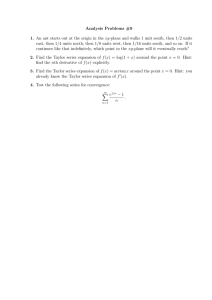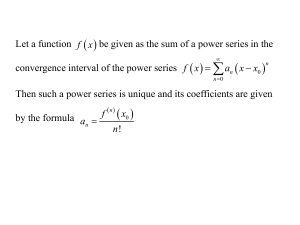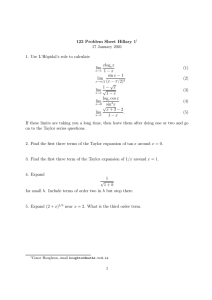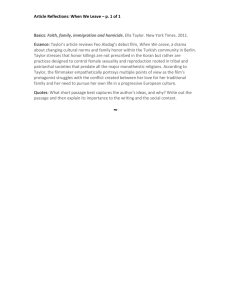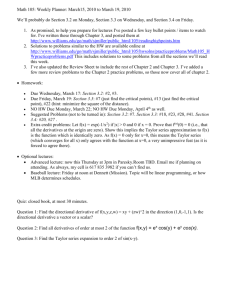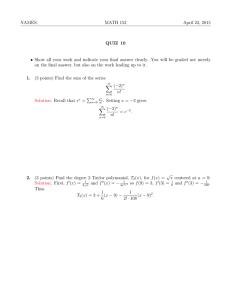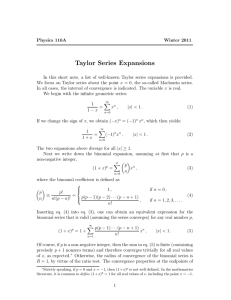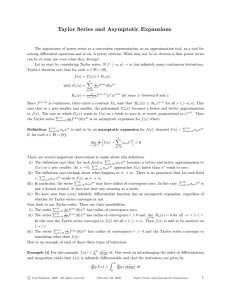Analysis Problems #9 Solutions 1. east, then
advertisement
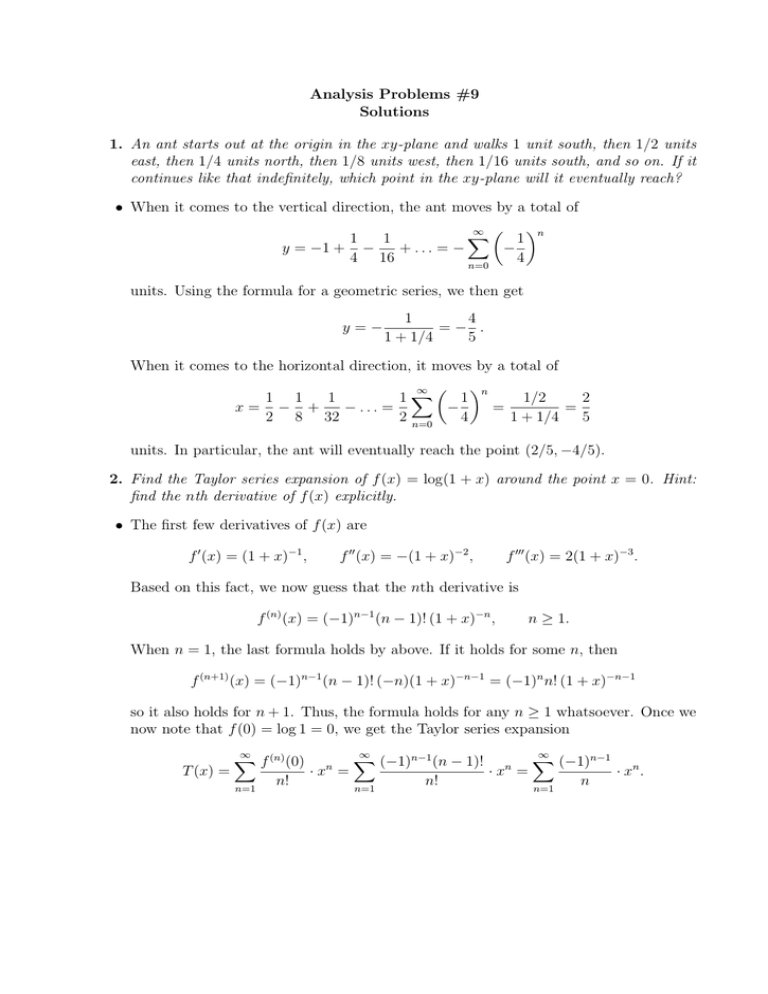
Analysis Problems #9 Solutions 1. An ant starts out at the origin in the xy-plane and walks 1 unit south, then 1/2 units east, then 1/4 units north, then 1/8 units west, then 1/16 units south, and so on. If it continues like that indefinitely, which point in the xy-plane will it eventually reach? • When it comes to the vertical direction, the ant moves by a total of )n ∞ ( ∑ 1 1 1 y = −1 + − − + ... = − 4 16 4 n=0 units. Using the formula for a geometric series, we then get y=− 1 4 =− . 1 + 1/4 5 When it comes to the horizontal direction, it moves by a total of )n ∞ ( 1 1 1 1∑ 1 1/2 2 x= − + − ... = − = = 2 8 32 2 n=0 4 1 + 1/4 5 units. In particular, the ant will eventually reach the point (2/5, −4/5). 2. Find the Taylor series expansion of f (x) = log(1 + x) around the point x = 0. Hint: find the nth derivative of f (x) explicitly. • The first few derivatives of f (x) are f ′ (x) = (1 + x)−1 , f ′′ (x) = −(1 + x)−2 , f ′′′ (x) = 2(1 + x)−3 . Based on this fact, we now guess that the nth derivative is f (n) (x) = (−1)n−1 (n − 1)! (1 + x)−n , n ≥ 1. When n = 1, the last formula holds by above. If it holds for some n, then f (n+1) (x) = (−1)n−1 (n − 1)! (−n)(1 + x)−n−1 = (−1)n n! (1 + x)−n−1 so it also holds for n + 1. Thus, the formula holds for any n ≥ 1 whatsoever. Once we now note that f (0) = log 1 = 0, we get the Taylor series expansion T (x) = ∞ ∑ f (n) (0) n=1 n! ·x = n ∞ ∑ (−1)n−1 (n − 1)! n=1 n! ·x = n ∞ ∑ (−1)n−1 n=1 n · xn . 3. Find the Taylor series expansion of f (x) = arctan x around the point x = 0. Hint: you already know the Taylor series expansion of f ′ (x). • Using the formula for a geometric series, one easily gets ∑ ∑ 1 2 n f (x) = = (−x ) = (−1)n x2n . 1 + x2 n=0 n=0 ∞ ′ ∞ Integrating term by term, we can then obtain the Taylor series for f (x), namely f (x) = ∞ ∑ (−1)n x2n+1 n=0 2n + 1 . 4. Test the following series for convergence: ∞ ∑ e1/n − 1 n=1 n . • In this case, we use the limit comparison test with an = e1/n − 1 , n bn = 1 . n2 Note that the limit comparison test is, in fact, applicable here because an e1/n − 1 e1/n (1/n)′ lim = lim = lim = e0 = 1 ′ n→∞ bn n→∞ n→∞ 1/n (1/n) ∑ ∑∞ by L’Hôpital’s rule. Since ∞ n=1 bn converges, n=1 an must also converge.
